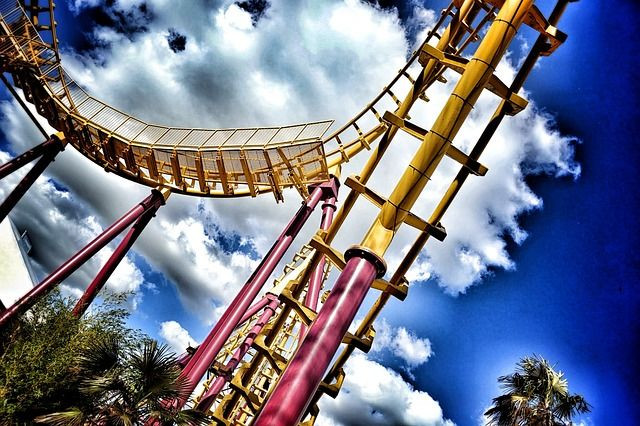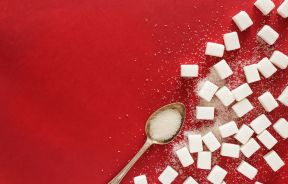Natural Remedy For Kidney Stones: Roller Coaster May Help Pass Crystals Faster Through Urinary Tract

The unbearable lower back pain, the frequent urge to urinate, and the sudden onset of nausea are tell-tale signs of kidney stones. If you've had a kidney stone, you might describe waiting for a stone to pass as "the worst pain I've ever had." Now, researchers at Michigan State have found a surprising treatment that may help patients pass kidney stones faster — theme park rides, specifically roller coasters.
The preliminary study's findings "support the anecdotal evidence that a ride on a moderate-intensity roller coaster could benefit some patients with small kidney stones," said Dr. David Wartinger, co-author of the study, and a professor emeritus of urology at the Michigan State University College of Osteopathic Medicine, in a statement.
In the study, published in the Journal of the American Osteopathic Association, Wartinger and Marc Mitchell, lead author of the study, heard claims of a patient who passed a stone after each of three consecutive rides on Disney World's "Big Thunder Mountain Railroad," roller coaster in Florida. The patient's claims corroborated other stories Wartinger has heard over the years. This prompted him to test out the phenomenon for himself.
The researchers used their ingenuity to create a 3D anatomical model of a kidney filled with real urine and actual three kidney stones of different sizes: small (4.5 cubic millimeters), medium (13.5 cubic mm) and large (64.6 cubic mm). They experimented with the position of the different sizes of kidney stones in different parts of their kidney model. For example, the largest stone was placed in the upper part of the kidney; on another, the large stone was placed in the middle of the kidney — with each stone being placed in each location of the kidney for at least one ride. The model kidney was taken on the roller coaster 20 times.
One aspect the researchers could not control — seat assignment. Seating was random and determined as a function of place in the waiting line. Interestingly, seat assignment was important when it came to passing the kidney stones.
Wartinger found sitting in front of the ride led to passing a kidney stone 17 percent of the time; sitting in the rear car led to passing 64 percent of the time. The kidney stones passed regardless of their size or location in the kidney. Wartinger and Mitchell hypothesize sitting in the rear helped because the last car ended up going faster down the inclines and around turns. It's speculated the vibrations and sharp tones moved the kidney stones from their location to travel through the urinary tract.
"[R]iding in the rear car of a moderate-intensity roller coaster might facilitate fragment passage," they wrote, in the paper.
The researchers do caution what may work for one patient may not work for the other. The combination of twists, turns, and bumps will differ for each case. This occurs since the inner structure of a kidney looks like a vast river delta with a series of branches leading to the main chamber — these branches look different for everyone.
“So I suspect that there are roller coasters that are more advantageous for one person versus another" Wartinger told Discover Magazine.
Wartinger admits he's heard anecdotal evidence bungee jumping, snowmobiling, and dirt biking might pass kidney stones. Basically, any activity that involves jarring motions could dislodge a kidney stone from its place in the branches of the kidney.
Internet lore claims cola drinks may promote the passage of kidney stones, also known as "Coke Treatment for Kidney Stones." This method involves drinking 72 ounces of Coca Cola, ideally not diet or caffeine-free, in 15 minutes or as fast as possible, and steaming and pureeing one-half pound of asparagus to be drunk immediately. This should be repeated as necessary until kidney stone pain is resolved and stones have passed.
According to The University of Chicago, the phosphoric acid, an additive used in dark colas, when consumed in greater quantities, can facilitate a reaction within the kidney that will dissolve the calcium oxalate or calcium phosphate admixture that is the kidney stone. However, cola drinks are not a proven remedy since phosphoric acid, mixed with nitric acid, is used as a cleaner in the beer industry to remove beerstone (calcium oxalate) from beer kegs, or as a home cleaning solution to remove rust.
Meanwhile, asparagus we buy at the store is a different species than the medicinal Asparagus racemosa — commonly grown in Asia. Furthermore, the medicinal use of asparagus typically involves the root, not the shoot we eat.
Taking a trip to Disney World to ride roller coasters seems like a fun and entertaining way to pass the time — and kidney stones.
Source: Mitchell MA and Wartinger DD. Validation of a Functional Pyelocalyceal Renal Model for the Evaluation of Renal Calculi Passage While Riding a Roller Coaster. Journal of the American Osteopathic Association. 2016.



























